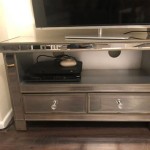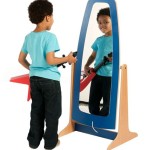How To Mirror Android Screen On Laptop Windows 10
Mirroring an Android screen to a Windows 10 laptop offers several advantages, from enjoying mobile games on a larger display to conveniently sharing presentations and photos. Several methods facilitate this screen mirroring functionality, each with its own strengths and weaknesses.
Using the Connect App (Wireless Display)
Windows 10 features a built-in wireless display receiver that allows direct mirroring from compatible Android devices. This method typically provides the lowest latency and is suitable for gaming and video streaming.
To use this feature, users should first ensure their Android device and Windows 10 laptop are connected to the same Wi-Fi network. Then, on the Windows 10 laptop, the "Connect" app should be opened. The app will display a waiting screen indicating readiness to connect.
Next, on the Android device, users should access the screen mirroring or cast settings. The specific nomenclature and location of this setting may vary based on the Android device manufacturer and operating system version. Common names include "Cast," "Smart View," "Wireless Display," or "Screen Mirroring." Users should look for these options within the quick settings panel (accessed by swiping down from the top of the screen) or within the display settings menu.
Once the screen mirroring setting is activated, the Android device should display a list of available devices. The Windows 10 laptop should appear on this list. Selecting the laptop initiates the connection. The laptop screen will then mirror the Android device's display.
Leveraging Microsoft's Your Phone App
The "Your Phone" app, pre-installed on most Windows 10 machines, provides seamless integration between Android devices and Windows. While primarily focused on notifications, messages, and photos, the app also offers screen mirroring functionality for select Samsung devices. Compatibility is a crucial factor to consider with this method.
Users should ensure both the "Your Phone" app on their Windows 10 laptop and the "Link to Windows" app (pre-installed on compatible Samsung devices) are installed and updated to the latest versions. Both devices should be connected to the same Wi-Fi network. Following the in-app instructions to link the devices is essential. The app will guide users through the pairing process, which involves signing into a Microsoft account on both devices.
After successful pairing, the "Your Phone" app on the Windows 10 laptop provides several functionalities, including screen mirroring. Selecting the "Phone screen" option within the app will initiate the mirroring process. The Android device's screen will then be displayed within the "Your Phone" app window.
Utilizing Third-Party Mirroring Applications
Several third-party applications offer Android screen mirroring to Windows 10. These apps often provide additional features beyond basic mirroring, such as screen recording and remote control. However, users should be cautious when selecting and installing third-party software, ensuring they are downloaded from reputable sources.
A variety of options are available, including AirDroid, Vysor, and ApowerMirror. These applications generally require installation on both the Android device and the Windows 10 laptop. Users should follow the specific instructions provided by the chosen application for installation and setup.
Most third-party mirroring apps operate over Wi-Fi but some might offer USB connection options. After installing and launching the app on both devices, users typically need to connect them by scanning a QR code or entering a pairing code displayed on the Windows 10 application.
Troubleshooting Common Issues
Several factors can impact successful screen mirroring. If connection problems arise, users should first confirm both devices are connected to the same Wi-Fi network and that the network is functioning correctly. Restarting both devices can often resolve temporary glitches. Ensuring all relevant software and drivers are updated to their latest versions is also recommended.
For the "Connect" app, enabling "discoverable mode" on the Windows 10 device may be necessary. Firewall settings on the laptop might also interfere with the connection; temporarily disabling the firewall for testing purposes can help identify this issue. For third-party apps, consulting the application’s specific troubleshooting documentation can provide solutions.
Choosing the Right Method
The most suitable mirroring method depends on individual needs and device compatibility. The "Connect" app offers the simplest setup for compatible devices, while the "Your Phone" app provides closer integration with other phone functionalities for specific Samsung models. Third-party applications provide a wider range of features and compatibility but might introduce latency or require additional configuration.

Swiftly Cast Android To Windows 10 Pc With 5 Approaches

How To Mirror Your Android Phone A Windows 10 Laptop Without Any S

Mirror Cast Your Android Screen To A Windows 10 Pc
How To Mirror Your Windows 10 Pc An Android Projector

Top 5 Apps To Mirror Android Screen Pc Gizbot News

How To Mirror Your Android Screen Windows 2024 Guide Techforgeeks

Easy Ways To Display Android Screen On Pc

Top 3 Ways To Cast Android Screen Windows 10

Project Your Android Screen To Windows 10 Pc Afdtechtalk

How To Mirror Cast Your Android Display A Windows 10 Without Any








